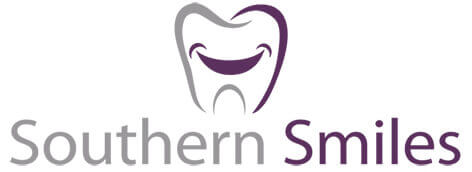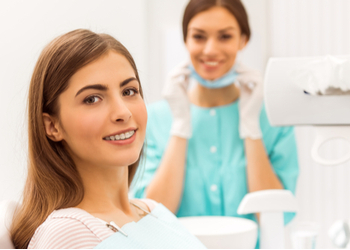Traditionally, metal braces were the only option for correcting orthodontic problems and were mostly worn by young children and adolescents. But there is a growing number of adult patients requesting discreet orthodontic treatment.
Clear braces are an excellent alternative for patients who don’t want to make everyone aware they are undergoing orthodontic treatment. However, each type of orthodontic system has its benefits and drawbacks depending on the level of correction needed.
What are the pros and cons of clear braces vs. metal?
Clear Braces
Clear braces, also called ceramic braces, are effectively the same as metal braces; however, they use clear plastic brackets and wires, or shades that are matched to your teeth. They still apply force to your teeth and jaws to realign them, so they are suitable for complex orthodontic issues and still need to be adjusted by your orthodontist.
Pros of Clear Braces
The big advantage of clear braces is that they are more aesthetically pleasing than metal braces as they are less noticeable. This can have a significant impact on the quality of life for patients who may feel self-conscious about wearing an orthodontic device.
Clear braces don’t irritate the gums and the soft tissues of the mouth as much as traditional metal braces. Check out our review of the best invisible braces if you want to learn more.
Cons of Clear Braces
Clear braces tend to be more expensive than metal braces due to the design and material used. The brackets also tend to be a bit larger than metal braces.
Clear braces are more prone to damage than metal braces as the materials used are less durable, so you may incur extra costs due to repairs.
The arch wires used for clear braces are either clear or white and since the material is porous it is prone to staining.
Clear braces also tend to take longer to realign teeth than metal braces and are better suited to more simple correction issues.
Metal Braces
Metal braces are the traditional braces used for orthodontic correction. They are composed of metal brackets adhered to the teeth using specialised dental glue which are then connected by arch wires. In some cases, rubber bands may be required for correcting certain conditions.
Metal braces need periodic adjustments to the arch wires to increase the pressure on the teeth and to ensure they are correctly aligning your teeth.
Pros of Metal Braces
Metal braces are the least expensive type of orthodontic corrective devices, making them a more viable option for most patients than clear braces.
They are also more effective than other types of braces and realign teeth and correct bite issues faster, especially gaps.
Metal braces are constructed from more durable materials than clear braces, which means that you are less likely to incur additional repair costs.
Metal braces are also less likely to show stains from pigmented foods which can adhere to clear braces and change the shade if good oral hygiene is not maintained.
Although they are more noticeable than other orthodontic systems, patients can turn this to their advantage by choosing different coloured rubber bands to express their style, show their school colours or support for their favourite sport’s team.
Cons of Metal Braces
Metal braces are more noticeable than other types of orthodontic systems which can impact the quality of life for many patients, in particular, older teens and adults.
They can create mouth sores in the soft tissues of your mouth, especially initially or after an adjustment.
Metal braces are challenging and time-consuming to clean and require special techniques for brushing and flossing to maintain good oral health.
Caring for Your Braces
Whether you choose clear braces or metal braces, it is essential that you care for your braces and teeth correctly.
A good oral hygiene routine is the key to healthy teeth and gums while wearing braces, but you will need to modify the frequency and the way you brush and floss. It is recommended that you clean your teeth and braces after every meal to remove any food particles that may get stuck to the brackets or wires.
You can use a regular toothbrush or a specially designed brush with a smaller head to access the space around the brackets. When flossing, carefully thread waxed floss between the arch wire and the gap in the tooth, moving gently and avoiding snapping the floss against your gums. A waterpik or interdental brush can also help with flossing, especially if your teeth are a little sensitive after an adjustment.
Once your braces are removed, consider booking a professional teeth whitening treatment to remove stains and improve the colour of your teeth.
Final Thoughts
Both metal and clear braces are a great way to achieve beautifully straight teeth. If you need corrective orthodontic treatment, call Southern Smiles on (02) 8503 9902 to book a consultation.






